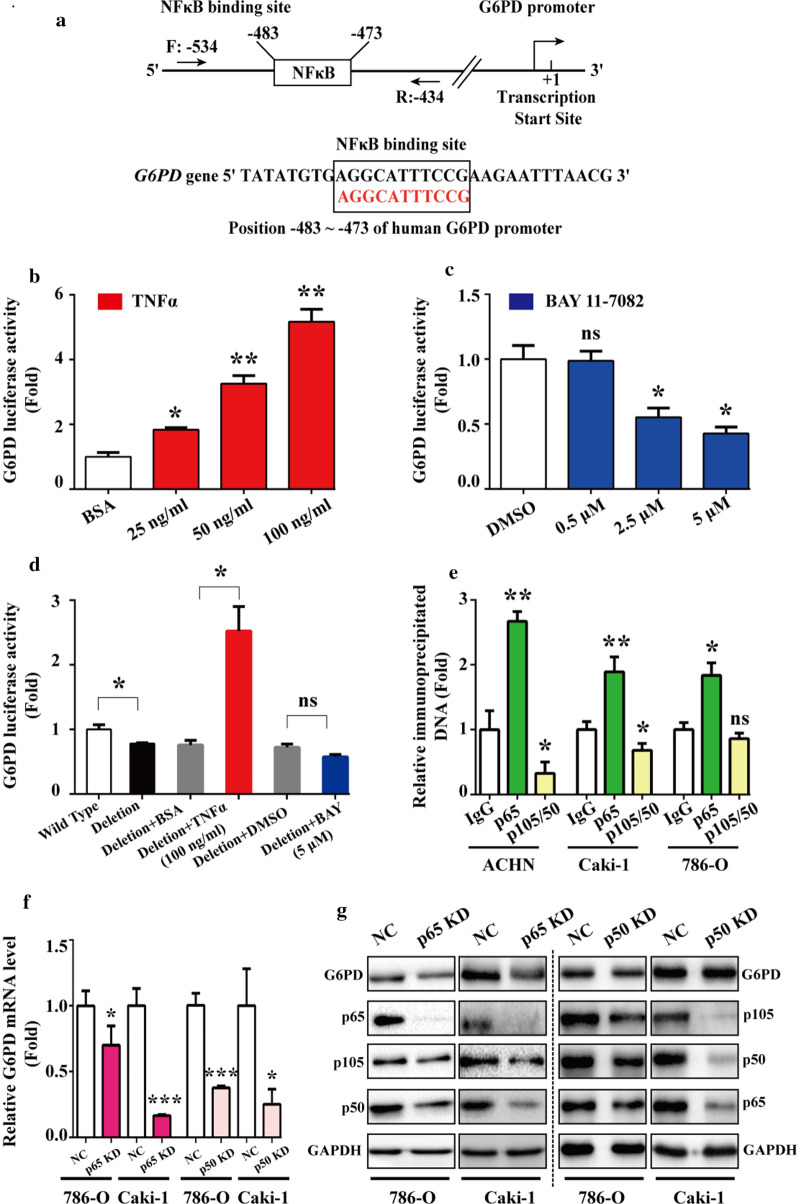Fig. 2.
NF-κB signaling pathway facilitated G6PD expression via direct protein–DNA interaction with p65 instead of p50. a MatInspector software platform showed that NF-κB binding site was localized at the G6PD promoter region and the primers were designed for ChIP analysis. b, c The G6PD promote sequence containing the potential NF-κB binding site was cloned to a pGL3-BASIC-luc vector (named G6PD-luc) and conducted to luciferase report assay in 293 T cells following treatment with TNFα (24 h) (b) or BAY11-7082 (24 h) (c) at indicated doses. d The NF-κB-binding sequence deleted vector was used to repeat the luciferase reporter assay in 293 T cells. e The critical factors involved in the NF-κB signaling pathway, including p65 and p50/105, were subjected to ChIP assay in ACHN, Caki-1, and 786-O cells. f, g p65 or p50 was knocked down by RNAi lentivirus infection in 786-O and Caki-1 cells. The changes in the expression of G6PD at the mRNA level and G6PD, p65, p105, and p50 at the protein level were detected using real-time RT-PCR (F) and Western blot (G) analysis, respectively. GAPDH was used as a loading control. Data are expressed as mean ± SD from three independent experiments, each performed in triplicate. *P < 0.05, **P < 0.01, ***P < 0.001; ns, nonsignificant vs each control. NC, Negative control lentivirus

